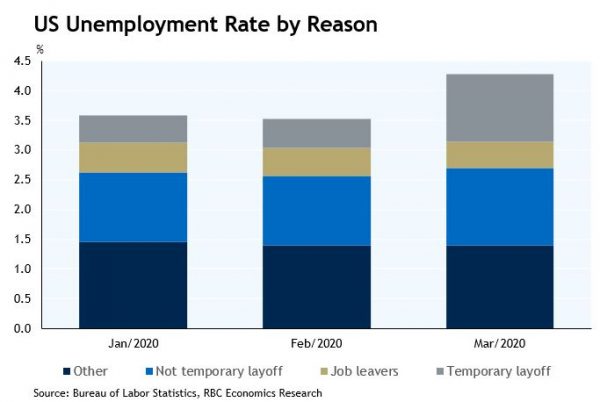- Payroll employment declined 701K – the largest drop since the financial crisis
- The unemployment rate jumped to 4.4%, broader measures deteriorated more
- April data will likely still leave the March jobs decline looking like a rounding error
The beginning of US layoffs tied to the coronavirus showed up earlier than expected, but the drop in March is still far from an accurate picture of labour markets today. The March payroll survey reference period was early in the month, prior to a 10 million spike in initial jobless claims over the two weeks after that. The 701K employment decline in March was already the largest since the financial crisis. The unemployment rate spiked by almost a full percentage point to 4.4% – and broader measures of labour market under-utilization jumped more than that. But the April jobs decline will almost certainly be the biggest in recorded history, and measured in the millions rather than thousands. The April unemployment rate could well jump to 15% or more.
The light at the end of the tunnel comes from the fact that most of the increase in the unemployment rate in March came from temporary layoffs. That temporary/permanent layoff split will be important in coming months – the greater the share of “temporary” layoffs, the quicker the job market recovery could be once the virus spread is brought under control. The reality, though, is that activity is not going to bounce-back overnight, and some businesses will be forced to permanently shut their doors. The longer the current disruptions last, the longer the recovery on the back-end is likely to take.















